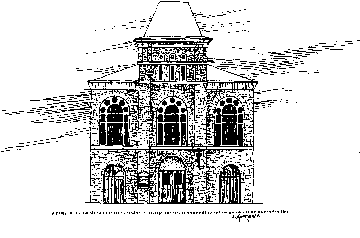In 1787, Richard Allen led most of the black members out of St. George’s Church and eventually into a new denomination, the African Methodist Episcopal Church. However, some African Americans remained in the St. George’s congregation.
Several years later, in 1794, eighteen of these members began holding their own religious services. They first met in homes; then in 1796 they purchased property and built African Zoar Church north of Philadelphia’s city limits in a section called Campington. “Black Harry” Hosier is the church’s patron founding pastor. The members of this new church never loosed their ties to the Methodist Episcopal Church, making Zoar the oldest black congregation in the United Methodist tradition with a continuous existence.
Zoar was the fourth congregation in the United Methodist tradition to be organized in Philadelphia. Today Mother African Zoar and Historic St. George’s remain as the oldest United Methodist congregations in the city.
On August 4, 1796, Francis Asbury dedicated the church building at Fourth and Brown Streets. He recorded in his journal that he “was called upon by the African society in Campington to open their new house, which I did, on Rom.i, 16-18, and had an unwieldy congregation of white and black.” Asbury preached at Zoar several times and ordained two African American local preachers, Jacob Tapsco and James Champion, there on April 9, 1809.
Zoar Church’s first black pastor was Perry Tilghman, a lay preacher who served the church from 1835 to 1844. At least five other congregations have been organized out out of Zoar church, earning it the affectionate nickname “Mother Zoar.”
On August 23, 1852, the first Convention of Colored Local Preachers and Laymen convened at Zoar Church. This was the first gathering of its kind in United Methodism. The African American preachers continued to meet annually until 1863, and in 1864 they organized the Delaware Annual Conference, the first of what were eventually twenty-five “Negro Annual Conferences” in the Methodist Episcopal Church.
Zoar church moved in 1883 when the congregation purchased a former Methodist Protestant church on Melon Street. The church was remodeled in 1897, and in 1926 Zoar opened a Community Center on adjacent property.
In 2020, Mother African Zoar UMC relocated to 3259 N. Broad Street and merged with the congregation of New Vision UMC.
Points of interest at this Heritage Landmark: The Melon Street sanctuary originally housed a Methodist Protestant congregation, then “The Reformed Episcopal Church of the Covenant.” It was then used as a refrigeration plant before it was purchased in 1883 by a philanthropist who sold it to the Zoar congregation for $1.00.
Special events: None as of this writing.
Area attractions: Many of Philadelphia’s tourist attractions date from the era of Mother African Zoar UM Church’s early history. Other Heritage Landmarks in the annual conference are Albright Chapel, Boehm’s Chapel, and Historic St. George’s United Methodist Church.
To visit: This is an active United Methodist Church and visitors are welcome at Sunday morning worship at 12:30 pm via Zoom. for more information.
Location: Within the boundaries of the Eastern Pennsylvania Annual Conference, in the city of Philadelphia at 3259 N. Broad Street.
Food and lodging: There are numerous restaurants and motels in Philadelphia.
For further information, contact: Pastor William Brawner, Mother African Zoar UM Church, E-mail motherzoarumc@gmail.com.
To learn more about United Methodist church history in this area:
Historic St. George’s UM Church, 235 N. 4th St., Philadelphia, PA 19106; 215-925-7788; Archivist.
William B. McClain, Black People in the Methodist Church: Whither Thou Goest? (Cambridge, MA: Schenkman Publishing Co., 1984).
Grant S. Shockley, ed., Heritage and Hope: The African American Presence in United Methodism (Nashville: Abingdon Press, 1991).

